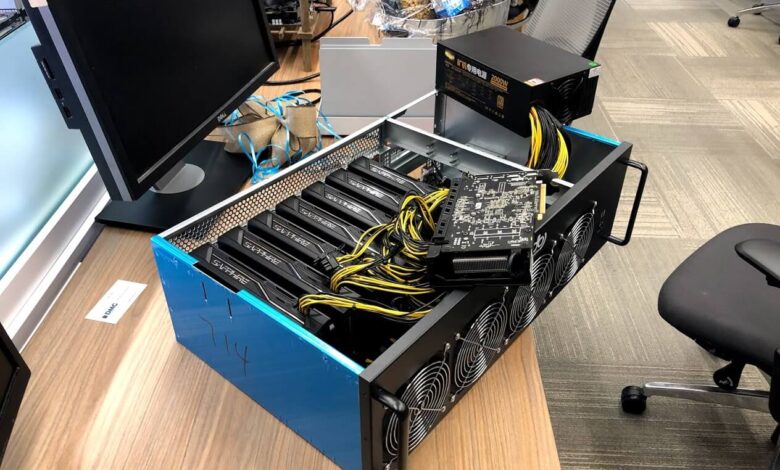Understanding ASICRUN Mining: Revolutionizing Cryptocurrency Mining

Cryptocurrency mining has undergone several evolutionary phases since the inception of Bitcoin in 2009. Initially, miners could utilize their central processing units (CPUs) to mine Bitcoin. However, as the network grew, this method became inefficient, leading to the development of graphics processing unit (GPU) mining. Further advancements led to the creation of application-specific integrated circuit (ASIC) miners, which significantly increased mining efficiency. Amidst this backdrop, a new concept emerged – ASICRUN mining, poised to revolutionize the cryptocurrency mining landscape.
What is ASICRUN Mining?
ASICRUN mining represents the culmination of technological advancements in cryptocurrency mining. It leverages the power and efficiency of ASIC miners while introducing a novel approach to consensus mechanisms. Unlike traditional proof-of-work (PoW) or proof-of-stake (PoS) mechanisms, ASICRUN Review introduces a unique consensus protocol designed to enhance security, scalability, and decentralization.
At its core, ASICRUN mining combines the specialized hardware of ASIC miners with a consensus algorithm tailored to optimize energy consumption and transaction throughput. This innovative approach aims to address some of the inherent limitations of existing mining protocols, such as the centralization of mining power and environmental concerns associated with energy-intensive PoW systems.
The Evolution of Mining: From CPU to ASIC
To appreciate the significance of ASICRUN mining, it’s essential to understand the evolution of mining hardware. In the early days of Bitcoin, mining could be done using CPUs. However, the increasing complexity of cryptographic puzzles necessitated more powerful hardware, leading miners to adopt GPUs for increased efficiency.
The introduction of ASIC miners marked a significant milestone in mining technology. ASICs are custom-built chips designed specifically for cryptocurrency mining, offering unparalleled computational power and energy efficiency compared to traditional CPUs and GPUs. This specialization led to a concentration of mining power among those who could afford ASICs, raising concerns about centralization within the cryptocurrency ecosystem.
The Challenges of Traditional Mining Protocols
While ASIC miners improved mining efficiency, they also exacerbated certain challenges inherent in traditional mining protocols. Proof-of-Work algorithms, such as those used by Bitcoin and many other cryptocurrencies, require vast amounts of computational power and energy to validate transactions and secure the network. This energy-intensive process has raised environmental concerns and contributed to debates about the sustainability of PoW-based cryptocurrencies.
Additionally, the centralization of mining power among a few large mining pools poses risks to network security and decentralization. As mining becomes increasingly competitive and resource-intensive, smaller miners may struggle to participate, further consolidating power among larger players.
Introducing the ASICRUN Protocol
ASICRUN mining addresses these challenges by introducing a novel consensus protocol that combines the efficiency of ASIC hardware with a more sustainable and decentralized approach to mining. The ASICRUN protocol employs a hybrid consensus mechanism that incorporates elements of both PoW and PoS, along with innovative features designed to promote fairness, security, and scalability.
Hybrid Consensus Mechanism
At the heart of the ASICRUN protocol is a hybrid consensus mechanism that combines the benefits of PoW and PoS. Miners using ASIC hardware perform the computational work necessary to validate transactions and create new blocks, similar to traditional PoW systems. However, instead of relying solely on computational power to determine mining rewards, the ASICRUN protocol introduces a stake-based component where miners must also hold a certain amount of the native cryptocurrency.
Proof-of-ASICRUN
The ASICRUN protocol introduces a new consensus algorithm known as Proof-of-ASICRUN (PoA). This algorithm leverages the specialized capabilities of ASIC miners while introducing additional requirements to ensure network security and decentralization. In PoA, miners compete to solve complex cryptographic puzzles, but their chances of success are also influenced by the size of their stake in the network.
Fair Distribution of Rewards
One of the key objectives of ASICRUN mining is to promote a fair and equitable distribution of mining rewards. By incorporating a stake-based component into the consensus mechanism, the protocol aims to incentivize participation from a diverse range of miners, mitigating the risk of centralization. Additionally, the ASICRUN protocol may include mechanisms to periodically adjust mining difficulty or rewards to maintain a balanced and sustainable mining ecosystem.
Advantages of ASICRUN Mining
ASICRUN mining offers several advantages over traditional mining protocols, including:
- Improved Efficiency: By leveraging ASIC hardware, ASICRUN mining offers increased computational power and energy efficiency compared to CPU or GPU mining.
- Enhanced Security: The hybrid consensus mechanism of ASICRUN enhances network security by combining the strengths of PoW and PoS while mitigating their respective vulnerabilities.
- Greater Decentralization: Through its stake-based component and fair reward distribution mechanisms, ASICRUN mining promotes greater decentralization within the mining ecosystem.
- Scalability: The ASICRUN protocol is designed to scale effectively, accommodating growing transaction volumes and network demand without sacrificing performance or security.
Conclusion
ASICRUN mining represents a significant advancement in cryptocurrency mining technology, offering a sustainable, efficient, and decentralized approach to consensus mechanisms. By combining the specialized hardware of ASIC miners with an innovative consensus protocol, ASICRUN aims to address the shortcomings of traditional mining protocols while paving the way for a more inclusive and resilient cryptocurrency ecosystem. As the cryptocurrency landscape continues to evolve, ASICRUN mining stands poised to play a pivotal role in shaping its future.



